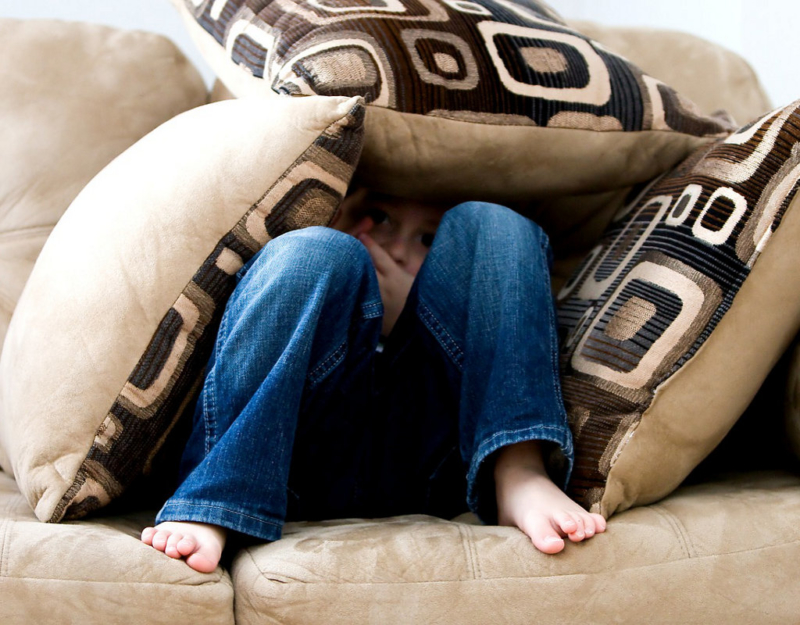Everyone has fears in their lives and whether it’s a fear of the dark, a fear of spiders or a fear of heights, fear is a healthy response to what your body perceives as danger. It’s when our fears become phobias that we need to develop ways of dealing with these strong reactions so they don’t take over our lives.
Fears vs phobias
Fear is an emotion experienced as a result of a perceived threat. One of our most basic survival mechanisms, fear is what tells us that we are in a potentially dangerous situation and is a healthy and normal reaction.
Phobias are an intense fear of something that actually poses no real danger. Phobias are involuntary and create an inappropriate sense of irrational terror.
When does a fear become a phobia?
Everyone experiences rational fear – it is an essential survival mechanism – but it is when fears become irrational that they turn into phobias. Irrational fears are not helpful in any way and can begin to dictate how you live your life. Phobias can become extremely disruptive to day-to-day life as the irrationality of fear can lead to avoidance by the sufferer. Most phobias plant their seeds during childhood, but they can also develop in adulthood.
Signs of phobia usually include anxiety-related symptoms such as:
- Sweating
- Nausea
- Shortness of breath
- Numbness or tingling sensations
- Accelerated heart rate, pounding heart or heart palpitations
- Chest pain
- Fear of dying
- Shaking
- Sense of choking
- Light-headedness or feeling faint
- Sense of being detached from yourself
Fears and phobias in children
Fear in children is a common developmental occurrence. Research by The Child Anxiety Network estimates that 90% of kids between 2-14 years have at least one specific fear and that most of these fears are considered normal. Common fears in children include:
- 0-2 years: Loud noises, strangers, separation from parents, large objects.
- 3-6 years: Imaginary things such as ghosts, monsters, the dark, sleeping alone, strange noises.
- 7-16 years : More realistic fears such as injury, illness, school performance, death, natural disasters.
Top tips for staying on top of phobias
Phobias by their nature are irrational, so it helps to have some simple strategies in place to help you conquer your phobias.
Don’t forget to breathe
In the face of a phobia, most sufferers will experience a multitude of anxiety-related symptoms that can powerfully overwhelm the body. Learning to breathe deeply and calmly in the face of your fear will help you to stay calmer when panic strikes.
Face your fear
Easy to say but hard to do, facing your fear will help you to overcome your phobia. Many phobia sufferers need the help of cognitive behavioural therapy if their phobia is severe, but it is possible to successfully tackle a minor phobia on your own.
Take baby steps
Facing, and ultimately overcoming, your phobia is more do-able if you tackle it in a step-by-step fashion. Work out what aspects of your phobia are the least and most fearful and then work your way through the list from easiest to hardest.
Be aware of your body
When your body is experiencing anxiety-induced symptoms, try to become aware of what is happening to your body and work to acknowledge that these are symptoms of fear NOT symptoms of anything more sinister. Many phobia sufferers begin to associate the physical symptoms of anxiety with the phobia itself, which can make dealing with the cause of the phobia more difficult.
Own your phobia
It may not make it magically disappear but acknowledging your fear can make facing it a little easier – rather than adopting avoidance strategies, owning your phobia allows you to work through it and to understand that while it may be scary, it isn’t dangerous.
Try distraction techniques
Whether it’s doing a crossword puzzle, reading a book or listening to an IPod, focussing on something quite separate to the source of your fear can work really well to distract you when you find yourself in a phobic situation. While never going to offer a cure to the phobia, distraction can get you through a tricky situation without a full-blown panic attack.
This article was written by Ella Walsh for Kidspot, New Zealand’s best family health resource. Sources include The Child Anxiety Network and Better Health Channel.
Read more on Kidspot:







Leave A Comment
You must be logged in to post a comment.